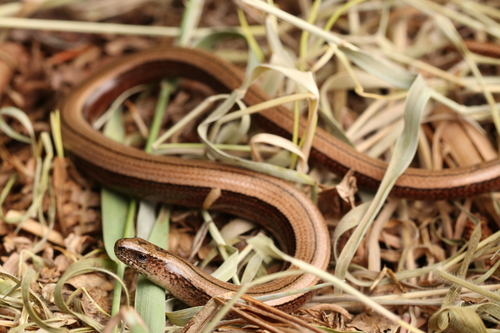
Slow Worm
Anguis fragilis, the slow worm, is a serpentine lizard boasting gleaming scales, known for its remarkable ability to shed its tail to escape predators. Dwelling in Europe's woodlands and gardens, it controls pests by feasting on slugs and insects, enhancing ecological health.
10-15 years
Lifespan
20.0 - 100.0 g
Weight
Length: 20 - 50 cm
Size
Brown, Grey, Yellow, Black, Tan
Color
0.3 mph
Top Speed
Least Concern
Conservation Status
Stable
Population Trend
Distribution Range of the Slow Worm
Anguis fragilis, commonly known as the slow worm or blindworm, is native to Europe and parts of Western Asia. Its geographical distribution extends from the British Isles through most of mainland Europe, including Scandinavia, and reaches as far east as the Caucasus and western regions of Turkey and Iran.
Slow Worm's Habitat
Environmental Conditions
The slow worm typically inhabits temperate regions with a preference for areas that offer moist and sheltered conditions. It is commonly found in grasslands, gardens, hedgerows, woodlands, and heathlands. The species thrives in environments where there is available cover such as leaf litter, undergrowth, stones, or logs, which provide protection from predators and extreme weather conditions.
Ecological Niche
Anguis fragilis occupies the ecological niche of a burrowing, ground-dwelling reptile. It primarily feeds on small invertebrates, such as slugs, worms, and insects, playing a role in controlling these populations. Its habitat preferences and behaviors reflect adaptations to avoid predation and temperature extremes, including its ability to burrow and its cryptic coloration that blends with the surrounding environment.
Copyright @ Nature Style Limited. All Rights Reserved.
 English
English